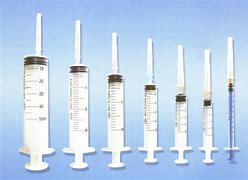Future outlook, Trend, and Importance of Companion Diagnostics
A companion diagnostic (CDx) is a diagnostic test that is
used in conjunction with a therapeutic drug to determine its suitability for a
specific individual. Companion diagnostics are co-developed with drugs to aid
in the selection or exclusion of patient groups for treatment with that
specific drug based on biological characteristics that determine responders and
non-responders to therapy. Companion diagnostics are based on companion biomarkers,
which help predict likely response or severe toxicity in the future.
Popularity of Companion diagnostics
The number of companion
diagnostics on the market is rapidly increasing. According to data compiled
by the Personalized Medicine Coalition, there were five drug/diagnostic
combinations that met the FDA definition of a companion diagnostic in 2006.
These were as follows:
I.
Invader UGT1A1 Molecular Assay and Camptosar
(irinotecan)
II. Gleevec (imatinib mesylate) and BCR-ABL LDT, as
well as DAKO C-KIT PharmDx, are treatments for gastrointestinal stromal tumors
(GIST)
III. Herceptin (trastuzumab) and DAKO Herceptest are
two drugs that are used to treat breast cancer.
IV.
Purinethol (mercaptopurine) and a thiopurine
methyltransferase test developed in the laboratory.
V.
Tamoxifen (Nolvadex) and a laboratory-developed
oestrogen receptor positive test.
Future of Companion diagnostics
The future growth of companion diagnostics will be dependent
on a healthy ecosystem. To be healthy, the ecosystem requires a diverse set of
players. The major players must include drug developers who continue to develop
targeted therapies based on biomarkers, diagnostic firms capable of developing
new diagnostic tests, and regulators who are willing to approve drug-diagnostic
combination products. The economic incentives for continuing to develop
companion diagnostics are strong. With less expensive clinical trials, drug
developers can achieve a faster time to market for drugs with significant
revenue potential. Based on targeted therapies, regulators see the potential
for more directed regulatory submissions with fewer adverse events. Payers see
the potential savings from avoiding unnecessary treatments. However, diagnostic
firms are the only group for which the companion diagnostics business model is
still unknown. This is especially true for diagnostic companies attempting to
develop theragnostic.




Comments
Post a Comment